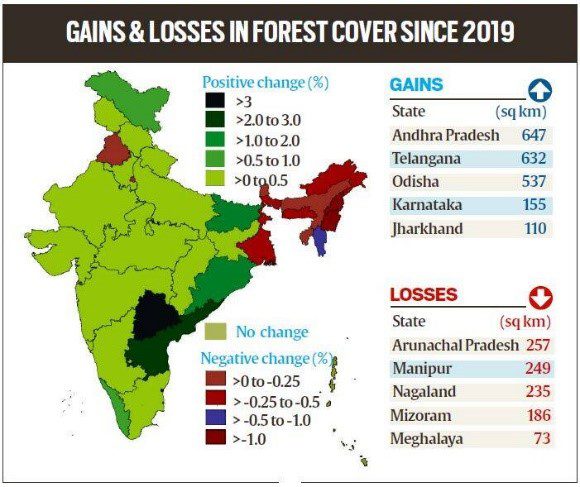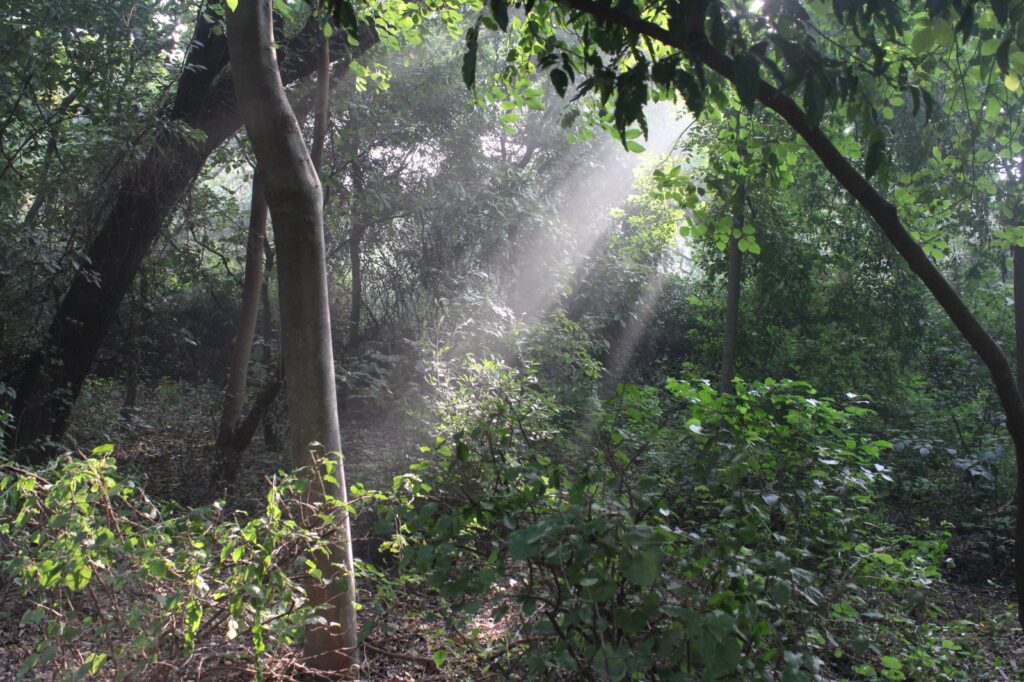A forest
isn’t just a collection of trees, it’s a tapestry of life that weaves together
ecosystems, cultures and generations. Forests are known for their invaluable
goods and services that they provide to mankind and the environment including
raw materials, timber, food, fibres, carbon capture, oxygen, and much more. To
safeguard the existing forests from over-exploitation, the government in 1927
introduced the Forest Act that empowers the government to classify forests into
reserved forests, village forests, protected forests and other similar
categories for their usage and also to regulate and check the illegal cutting
of trees for materials like timber.
Later, to
improve the extension of the Forest Act 1927, a new Forest Policy was introduced in
1952 to increase consciousness about increasing forest cover. After this in
1980, Forest Conservation Act was introduced which necessitates the prior
clearance from the central government for non-forest activities like
construction, etc. in forest areas to limit deforestation and safeguard the biodiversity of our country. But there were some misconceptions about the
extent of this act regarding the word forest (the definition) could have been misinterpreted at many places for conducting the non-forest activity so, the Supreme court on 12th December 1996 said in its order that “the word
forest covers all statutorily recognized forests, whether designated as
reserved, protected or otherwise for the purpose of Section 2(1) of the Forest
Conservation Act.”

According to the Forest survey report 2022, the total forest and tree cover of the country is 80.9 million hectares which is 24.62% of the geographical area of the country. As per the previous acts and policies, the term “forest area” denotes the legal status of land as per the govt. records while “forest cover” refers to the presence of trees over any land. Despite having such strict legal provisions for the protection of forests and wildlife, there are scenarios of decline in forest cover in many areas of the country including the northeastern states of our country. The reasons could be landslides and other natural disasters, shifting cultivation and other anthropogenic activities.

The Forest
(Conservation) Amendment Bill, 2023 was introduced in Lok Sabha in March 2023
and passed in July 2023 without considering the negative impacts it can have
on the forest cover of the country. The Bill is introduced to amend the
application of the Forest Act, of 1980. The main features of this Bill that
highlight the possible controversies and issues include firstly, that the Bill
excludes some of the lands from the application of the Act which includes the land
that has been recorded as forest but not notified as forest before the 25th
October 1980 and the land which has been converted to non-forest activity
before 12th December 1996.
The Bill
also states to exempt land situated within 100 km from international borders
for construction projects to ensure national security. Though this exemption
is introduced to ensure national security the application of this exemption may
also have negative impacts. For example, the northeastern states that lie
along the international borders have such great diversity in the flora as well
as fauna but exempting the 100kms of land from the purview of the act may cover
the entire geographical area of the state. Let’s consider Sikkim, as per the
forest survey report of 2022, 47.08% of the geographical area of Sikkim is
under forest cover. Now the exemption of 100 km of the area may destroy the entire
biodiversity of the state. Even though there are provisions for the
compensatory afforestation of the forest area (as per the Compensatory
Afforestation Fund Act) but this can never compensate for the existing forest cover
and the rich biodiversity that would be lost due to construction activities.

There are also exemptions stated in the new Bill for the projects like zoos, eco-tourism facilities and reconnaissance surveys. This may definitely serve as a boost for the economy of the country as such eco-tourism activities will surely gain much in monetary terms. But in this time when the world is already suffering from Global warming and climate crisis-like events, is it right to prioritize development and economic growth over environment? As per the previous Act, protected areas were categorized to preserve the wildlife in its own natural habitat. But now there are exemptions provided for safaris and having Zoos in the protected areas.
What would be the sense of having a zoo inside a protected area? If we are going to make a zoo inside the natural habitat of wildlife then, won’t the definition of the protected areas (including national parks and wildlife sanctuaries) change?

The northeastern states of our country have such rich and diverse flora and fauna. These states are the biodiversity hotspots. But now these projects (construction) may lead to the loss of forest cover in our country which is already under stress due to various anthropogenic activities and natural super disasters induced by Climate change (again due to human activities). The loss of natural habitat would directly impact the rich biodiversity.
In the delicate dance between anthropogenic activities and nature, the forest stands as a sentinel of resilience. Let us choose wisely and advocate fiercely for the preservation of these vibrant ecosystems of our country.
For more information:
https://www.thehindu.com/sci-tech/energy-and-environment/explained-what-will-the-amended-forest-conservation-act-change/article67146543.ece
https://indianexpress.com/article/opinion/columns/forest-conservation-bill-pm-modi-bhupendra-yadav-new-india-8879804/
https://pib.gov.in/PressReleaseIframePage.aspx?PRID=1942953
https://www.livemint.com/news/india/rajya-sabha-passes-forest-conservation-amendment-bill-11690981820331.html

